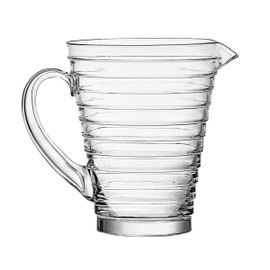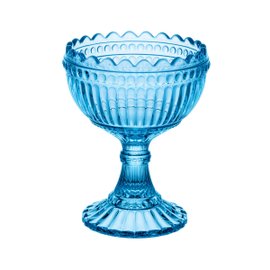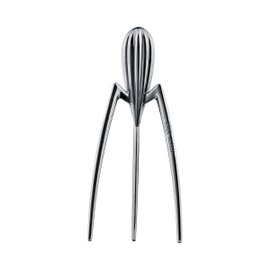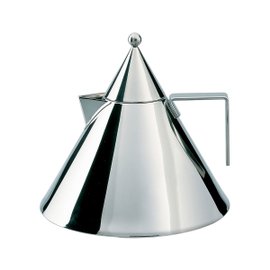Previous
Gita, drones and other ways of getting your pizza delivered


Your dream house is one step away from you.
Subscribe to our newsletter and get 10% off orders of at least £100,00!
Enjoy it and don’t miss out on our offers and updates.


Would you ever visit the Wall’s ice cream museum? Probably, and not just because summer's nearly here. Maybe the return of the Winner Taco wasn’t enough for you, or you’d like to sign up for the group tasting tour. Unfortunately for you - and for me - the Wall’s brand museum doesn’t exist. Not yet, anyway.
But let’s take a step backwards: what is a brand museum? As the name suggests, it’s a museum dedicated to a particular brand, where everything that could document its history is collected and displayed.
This goes beyond mere self-promotion: it’s the perfect synchronism of the content of a space and the people running it - ultimately it’s a brand telling the world about its own identity. Through an exhibition of products, certainly, but also through historical itineraries, workshops, seminars and debates; enhancing interaction, in fact, which is one of the principles of good design.

The first design objects found their way into decorative art museums in the early nineteenth century. Curators began to take an interest in furniture, ceramics and fashion, choosing the most interesting and representative pieces to include in their exhibits. An example is the V&A Museum in London, which still continues the practice began when it opened in 1852 as the Museum of Manufacturers (no coincidence).
In the 20th century, however, it was modern and contemporary art museums - including the Stedelijk Museum in Amsterdam and the Pompidou centre in Paris - which showed an interest in industrial design and the company history In this sense, the MoMA is undoubtedly the pioneer, as it boasted the first section entirely devoted to architecture and design way back in 1932.
Via delle Industrie 3, Noviglio - Milan, Italy
Mon-Fri: 10-18
Chiusura: festivi e chiusura aziendale
Free entry with booking, free guided tour
For reservation: +39 02 90012296
The Kartellmuseo was founded in 1999 to mark the company’s fiftieth anniversary, and the following year it won the Guggenheim Business and Culture Award for the best company museum. Its collection boasts more than 8,000 objects, 5,000 drawings and 15,000 photographs, which reconstruct the story of the Italian brand, including its hidden side, such as the research behind choices of materials, production techniques and communication strategies.

The museum building is historically interesting too: it’s the Kartell premises in Noviglio (Milan), the company’s headquarters since 1967. Designed by Anna Castelli Ferrieri and Ignazio Gardella, the building is a significant legacy of Lombardy’s industrial architecture.


Hämeentie 135, Helsinki, Finland
Tue, Thu, Fri: 12-18
Wed: 12-20
Sat-Sun: 10-16
Closing day: monday
For information: +358 (0) 20 439 5326 | info@designcentrehelsinki.com
The iconic glassware and ceramic design brands Iittala and Arabia have opened a design centre in Helsinki which contains (and brings together) a museum and a workshop. Alongside the classic immersion in the history and collections of the two brands - with guided tours available - the centre invites visitors to interact with the artists at work and take part in creative workshops, which can culminate in small-scale exhibitions.
Encounters, events and courses are organised and promoted throughout the year, open to local artists, students of design and also ordinary interested visitors.



Via Privata Alessi 6, Crusinallo di Omegna (VB), Italy
Admission only with reservation
Closed at the weekend
For information and booking: +39 0323 868611 | museo.alessi@alessi.com
The Alessi Museum was opened in 1998 by Alberto Alessi, inside the company’s factory. It contains more than 24,000 objects and prototypes, some 13,000 drawings and 20,000 photographs, in addition to a substantial number of publications - from catalogues to press releases, articles to journals - documenting the story of the Alessi brand and Italian home design in general.
Conceived specifically as a cross between an archive useful to the company and a museum in which to meet its audience, here Alessi welcomes visitors and organises tours, temporary exhibitions, publications, meetings and collaborations with international design museums and universities.
It’s a centre for documentation and discovery, concerned not merely with preserving and publicising the history of the brand, but also with positioning the Alessi story within the wider panorama of design and everyday life in Italy. Alessi’s Conico coffee pots, for example, were my parents’ wedding presents: they’ve been in the family longer than I have.
Brand museums are undoubtedly still getting to grips with the classic assumption that a work of art is always superior to an object produced in a factory and destined for sale - although at times we need someone to explain to us why it’s perfectly acceptable to exhibit that urinal.
Nevertheless, these are objects we’ve all used at least once in our lives and which say something about us: they’re products of culture, exactly like the imperial family’s tea set displayed in the V&A. In the case of design museums, these speak of the relationship between three poles - culture, client and commerce - which, at a particular moment in history, has given rise to the creation by a brand of a certain product, a certain line, a certain philosophy.




Furniture
Kartell
Philippe Starck - Eugeni Quitllet
Gifts
Best Italian Design
New&Cozy Express Delivery
Top brand Italian Design
LoveTheSign @ Gaudenzi
Italian Design
Design icons
A game of opposites
LOVE DAYS
Outlet
Anna Castelli Ferrieri
The best of Design
Smart Working
Kids
Decor-Mania: looking for the right object for yourself
Dining
Iittala
Aino Aalto
Marimekko
Classic Blue - Pantone® 2020
Kitchen Decor Under 100£
Klaus Haapaniemi
Alessi
Marcel Wanders
Home Accessories
Philippe Starck
Made in Italy icon
Design Icons - Bday LoveTheSign Edition
Choose your Design gifts up to 30% off
Love inspires Design
Aldo Rossi

 Back to
Back to
Size*
Quantity*




